16th July 2020
Sabato Visconti
I have found it quite hard to research and analyse Visconti’s work. if you visit his website Sabatobox.com, Instagram page, Facebook and Saatchi Art online, they all present different types of his work. I find this difficult because apart from the fact they are all manipulated images I can not find a common bond that they share.
Sabato Visconti is an award-winning new media artist and photographer based in Western Massachusetts. Born in São Paulo, Brazil, and raised in Miami, Sabato went on to earn a B.A. in Political Science from Amherst College. Sabato’s work seeks to reconfigure traditional understanding of photography and digital media, by interrogating how hegemonic structures distort and influence individual subjects.
About The Artist Sabatobox.com
Glitch Photography in the Age of Postphotography
As a practice, Glitch Photography can be defined in two ways: (1) the documentation of glitches in digital platforms, displays, software, interfaces, workflows, and hardware; (2) the creative use of glitches and glitch processes in photographic production. Presented here are works of Glitch Photography and adjacent Postphotography works, beginning with JPEG Databending experiments from 2011 until the present day.
Visconti Sabatobox.com
Below is an example of a series of Visconti’s glitch work with the title ‘Jules in June’. This series shows how Visconti uses a variety of techniques to create his art photography. We can see that some of the images still resemble the photograph taken with the addition of glitches to work with the subject to produce a secondary ‘glitch photograph’ while others dominate the subject and become photo ‘artworks’ which are more akin to illustrations or fine art due to the fact they are created from shapes, colour and patterns.
It is the first theme of ‘glitch photographs’ that I will be producing where the subject is more important than the glitch itself because it is how mental health represented by the glitch makes the person feel.
The colours in Visconti’s series are quite tame compared to many glitch artworks and images that other practitioners produce. These works have over powering colours and somehow remind me of a night club with neon lights. They have that feel of light beams in the dark from a UFO above and the static energy and electrons from that UFO that disrupts life here on Earth.
I absolutely love one quote that I found on Visconti’s website and that is, “What does it mean to be a photographer when everything has already been photographed?”
This is one of my debates that keep going around and around my head. How can I push the boundary and produce photographs that are interesting and earn the more than 10 second look award? For me it is working in conceptual themes and presenting the photographs differently so that they work in partnership with sculptures and art works. But that question is the one that constantly plays in the back of mind like an annoying theme tune.
I have found one blog, ‘CrispMe‘ that has chosen specific works of Visconti’s to show their viewers. These works when shown together away from the rest of their series become far more conceptual in their visual appeal. I also find that because the subjects can be seen, even if they have been sliced and glitched that there is still an essence of the person in the image, as well as it being visually pleasing to the eye. This enables the images to be viewed with curiosity, questioning and with admiration.
It is this combination of image and glitch that I am going to try to achieve with my images. This will enable the viewer to stop, view the work and see my self-portrait and either working with a title or text within the images I hope that my images will be aesthetically pleasing as well as question the meaning of mental health on people.
In conclusion, I did not find Visconti’s work grabbed my attention, even though he is well known for his work and has had many exhibitions within important establishments, for example Tate Britain. This could be the way that his work has been presented to us on different sites. I feel there is not enough text to accompany his work as I personally find that reading about the thoughts, ideas and motives behind artists and photographers work important, as it gives images and artworks meaning and reasons for being in existence. This is obviously because I love work that is conceptual and find many art works that serve only to please as their function in the art world quite tedious and very repetitive.
However, I have found one interview on the web which has pushed me towards a more positive reaction to his work. The interview can be found on the website ‘the Periphery.’ I believe that this interview helped to change my mind about Visconti and his images because it gives an insight into his working mind and his concepts of the glitch technique, something that other websites lack. It gives his outcomes more creditability as though they stand for something more than just manipulated outcomes with titles. In fact I also looked at them more closely and compared them to one another, therefore it does show that presenting work in the correct way is very important to engage the viewer and hold their interest. It also helps them to question what they see and the artwork and the images then become objects of visual interest in their own right.
Rosa Menkman
18th July 2020
Rosa Menkman produces glitch art that for me is far more conceptual.

Rosa Menkman is a Dutch artist, curator and researcher whose work focuses on noise artifacts that result from accidents in both analogue and digital media (such as glitch, encoding and feedback artifacts). These artifacts can facilitate an important insight into the otherwise obscure alchemy of standardization via resolutions.
The standardization of resolutions is a process that generally imposes efficiency, order and functionality on our technologies. It does not just involve the creation of protocols and solutions, but also entails the obfuscation of compromises and the black- boxing of alternative possibilities, which are as a result in danger of staying forever unseen or even forgotten.
Rosa Menkman Arts At Cern
To be honest I didn’t understand a word of her artist statement above, apart from the odd word here and there.
For me it was better to see her work visually to understand her concepts however Menkman’s website also looks confusing so I now realise that both her and Visconti’s website are built as a glitch. These websites are very hard for me to access as I have this weird visual disability where if things are not organised and clear visually it becomes very unsettling for me and I cannot access it, a type of blindness caused by disorder.
I have chosen part of a series of work to upload into this blog which can be seen below:
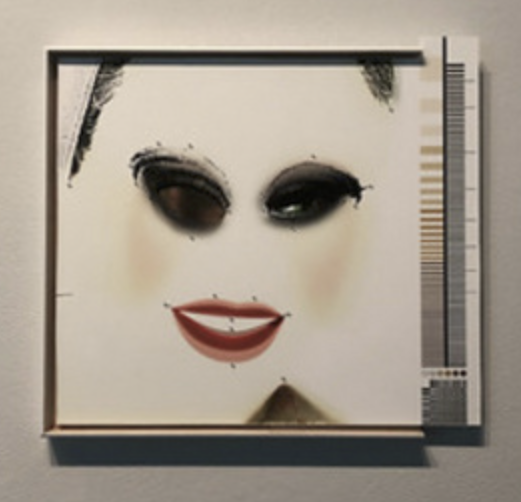
All though these selected works fall under the art glitches category, I was particularly drawn to their presentation style for exhibition. If you look at the work and the frames that they are within we can see that the images are presented beyond the frame boundary by cutting into it and extending the work through the man made gaps. This represents those glitches that slide out of the image boundary but here thy are additional add ons to the images that Menkman has produced.
Dead End
Due to the fact that I am able to find glitch artists that easy to research I have put in the search box the words – glitch portraits. This way I can find glitch portraits that I find inspiring and then see if their artist/ photographer has created any more.
The Google image search for ‘glitch portraits’ brought up these images:
Looking at the images that the search came up with, there are three categories of glitch art. The first category is photography glitches, the second category is drawings of portrait glitches and the third is YouTube videos about glitch art. I found it quite disheartening as I really wanted to research deeper into the processes different artists use and there reasons for glitch art production within their work.
Eduardo Gomez
One image however did catch my eye and it led to the artist Eduardo Gomez and the Lens Culture website. The series is called ‘Lucky Accidents’:
I´m a portrait/fashion photographer. One of my hard drives was damaged. This is the result of the failed data recovery process. Several images presented glitch and i combined two or three together to create this collage series.
Eduardo Gomez Lens Culture
After researching and looking at different types of ‘accidental’ glitches, I personally do not think these look like corrupted files, the glitches are far too even in form and seem to aesthetically compliment the images that they were supposed to have corrupted. The artist has said that he collaged images together but colour and form seem like they have been very carefully composed.
Which ever is the truth, there is no taking away the fact that these images are very pleasant to my eye and I feel the best I have seen as yet. The colours are juxtaposed well with the pink blue and lilacs working well, very sensual. Those that are more dramatic and represent glitches more are those with the yellows and greens and they visually signify a wildness which is unnatural and unplanned.
My dilemma though… are these art or concept, or both?
For me these will come under the art category because they are attractive to the eye rather than giving the viewer a concept to work with, They could easily be conceptual if there was a theme or a link running between the images but the dynamic colour would still definitely mean the concept would play second best to the visual.
Olivier Ratsi
The glitch process affects the image received by the observer. It creates a disturbing failure, and a quite consistent effect, so that the observer cannot fully decode the information. However this break acts—without preventing the observer from reconstructing an image—through his own life experience.
Olivier Ratsi Animal New York

The artist Ratsi has categorised his photographic glitch images as collages due to the way that they are formed. The series ‘Once Upon a Time the Presidents’ consists of images that have been deconstructed and broken into digital blocks and strips and then reformed in Photoshop. The images juxtapose “familiar visual traits and forcing the viewers to identify several subjects simultaneously in the same context” Irina Dvalidze, Animal New York animalnewyork.com
This series undoubtedly has a conceptual approach to its production and its meaning. The works would particularly resonate with Americans as it is a comment on their political history and the Presidents as individuals and as a collective that govern them.
While looking at this series I viewed Ratsi’s website and his artworks. He is actually a visual artist who is known for his dynamic light installations. These works are truly amazing and I would like to actually be able to see one of his exhibitions in the flesh.
19th July 2020
Heitor Magno
While searching the the google search ‘glitch portraits’ I came across the images of Heitor Magno on the website Hunger hungertv.com From here I searched his name further first with Google search and then by accessing his website.
Obsessed with technology and its affect on our behaviour, Heitor questions our willingness to expose intimate moments in our lives, and the affect that the endless repetition and recycling of imagery on social media has on our psyche.
hungertv.com
The following images are part of a series of portraits and self-portraits containing glitches and pixelation to convey emotions unknown. The unknown is related because both the facial expressions and the eyes have been glitched out.
Magno’s backgrounds are blank and clean, void of information and visual distraction. The clear background also avoids giving us a narrative as there isn’t any information to process and to connect to the world therefore the only information to be gained is from the figures and part of any faces that have not been glitched.
The artist also layers his work and due to the fact that I have been studying and practicing glitch photography I can tell which photographs have been constructed by layers.
Another technique which helps the visual impact of these images is where Magno has used neutral pale tones as the background which emphasise the colours.
The images that I particularly find striking can be seen below.
I have read that people see his ‘selfies’ as a piece of performance art and that Magno actually calls his work ‘selformance.’
Although I think that these images are eye-catching, colour co-ordinated and have something to say to the viewers, for my work, however, the images are still too aesthetically pleasing. My images will have to somehow give a sense of pain and confusion so that the viewer can in essence see what mental health feels like.
20th July 2020
Polygon
Analog glitch portraits
Polygon is a visual artist and film maker who lives in Paris. He works with 80’s and 90’s analog gear and CRT TVs, it is this hardware that give his portraits various corrupted glitch effects.
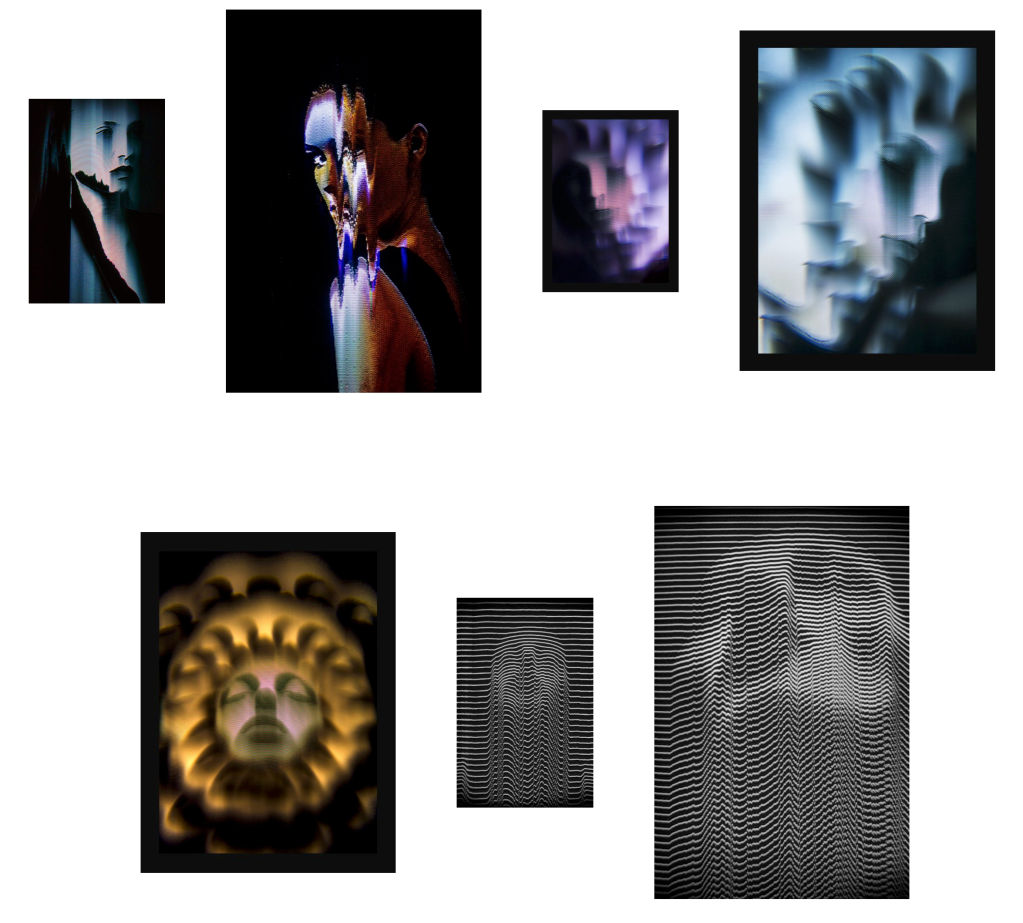
If you visit Polygon’s website polygon1993.com you will be able to find interested and varied glitch portraits which sometimes he has created in collaboration with other artists.
I was also very relieved to find that I was able to navigate his website with ease as it was set out clearly.
There are two particular series that I am drawn to on Polygon’s website. The first is ‘La Crucifixion Du Soleil’ and the second, ‘The Deities’ series which is in collaboration with the French photographer Alexis Pillon.
The work represents portraits of women and the combination of themes such as women and cyber-aggressions on the internet and invisible bullying within social networks.
Below are some of my favourite images created by Polygon.
Although, again these would full under my category of creative or art photography because they are predominantly shapes, lines and colour, they do have for me a sense of mental health.
The way faces are angled, eyes closed, sullen lips and the hues of the colour all could easily be likened to an aspect of sadness or depression for example.
The first three images that have the reality of the eyes in the photographs help these images slightly cross over into the type of image I am planning to achieve. This is because for me, my series of images will focus on the person and how having a mental illness makes you feel. I would therefore need the portrait to be very dominant as it is about the person first and foremost, the illness and how it makes you feel secondly and the glitch effect third. I am not saying that my glitches will not be dominant or easily seen, but they will need to work with rather than above the portrait for visual predominance.

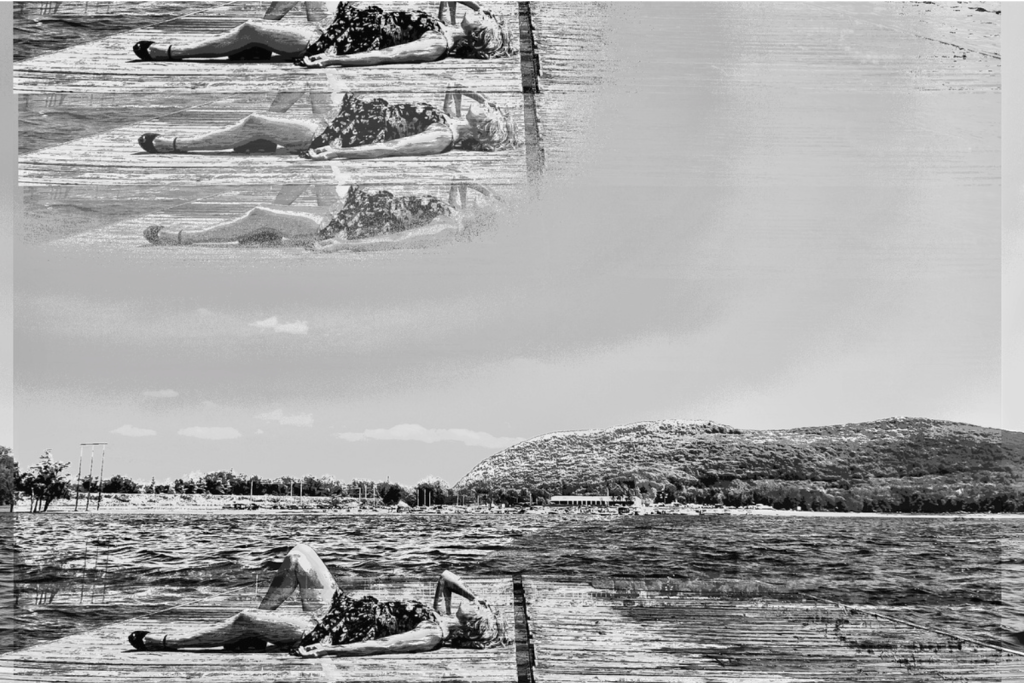

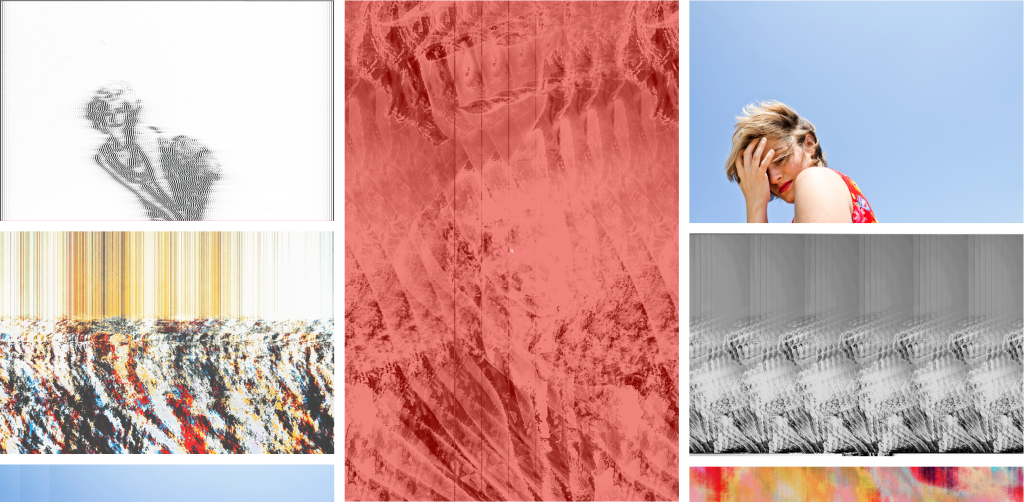


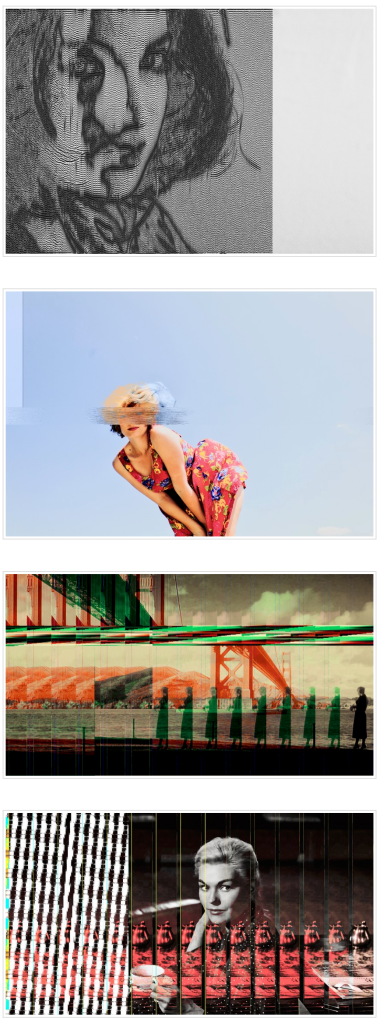
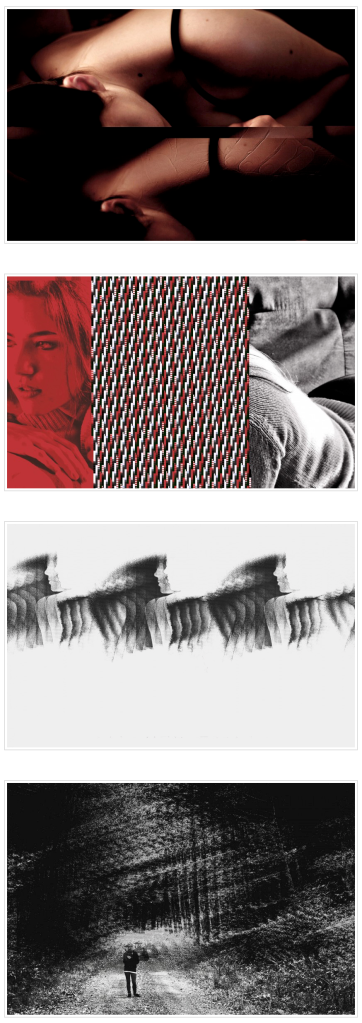

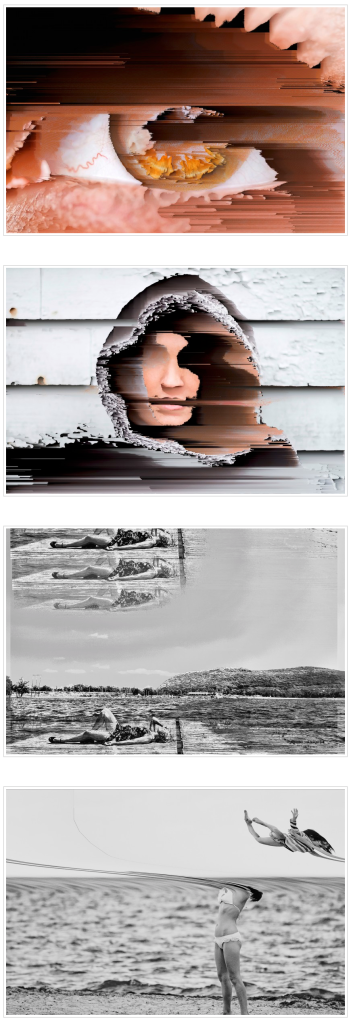



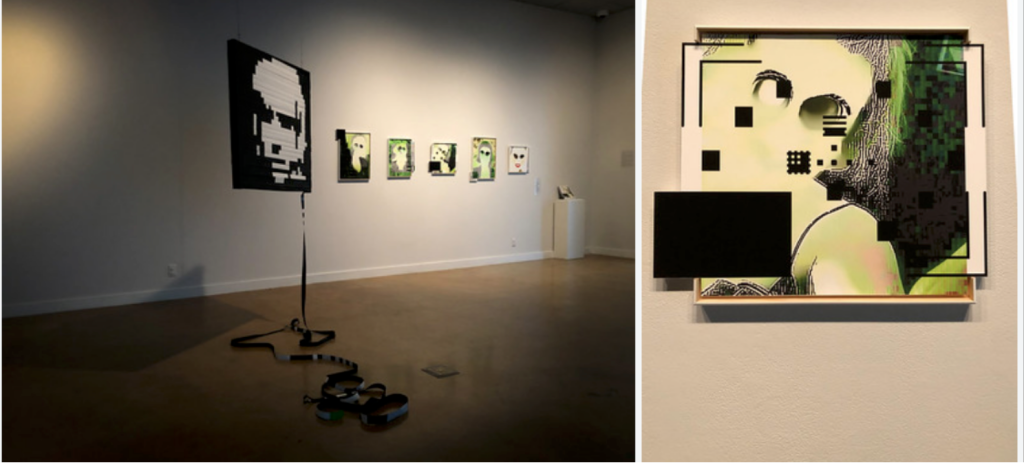


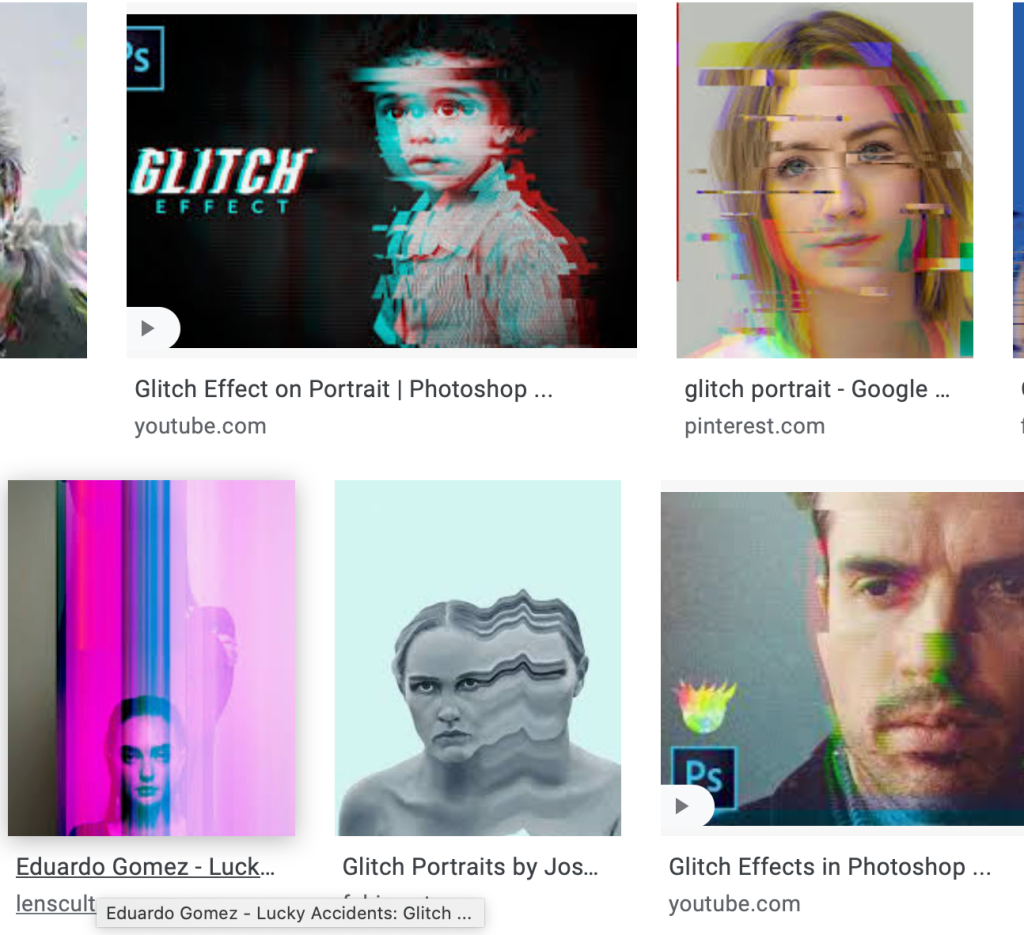




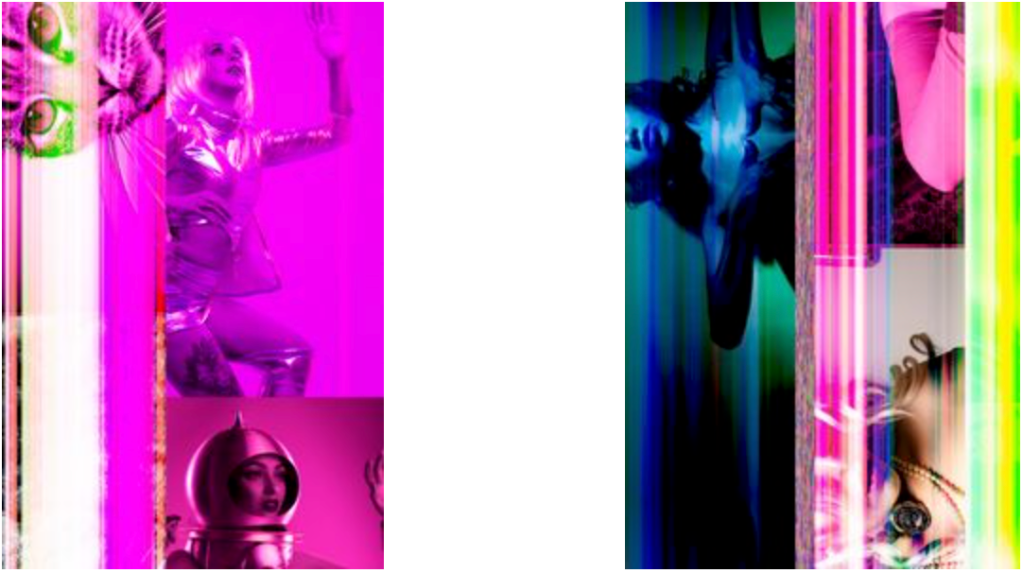





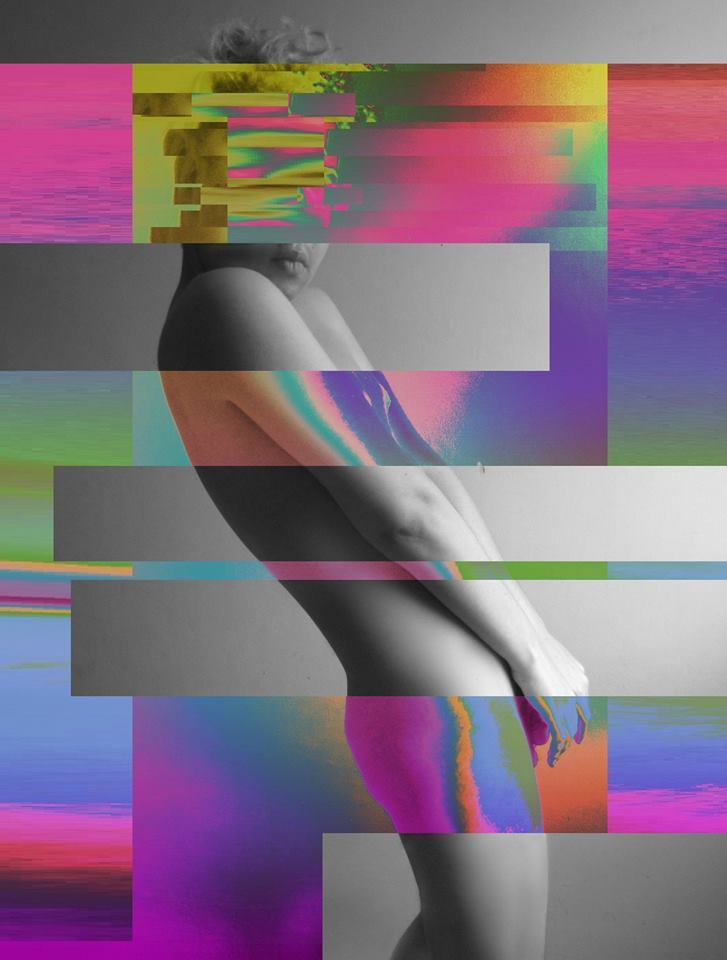
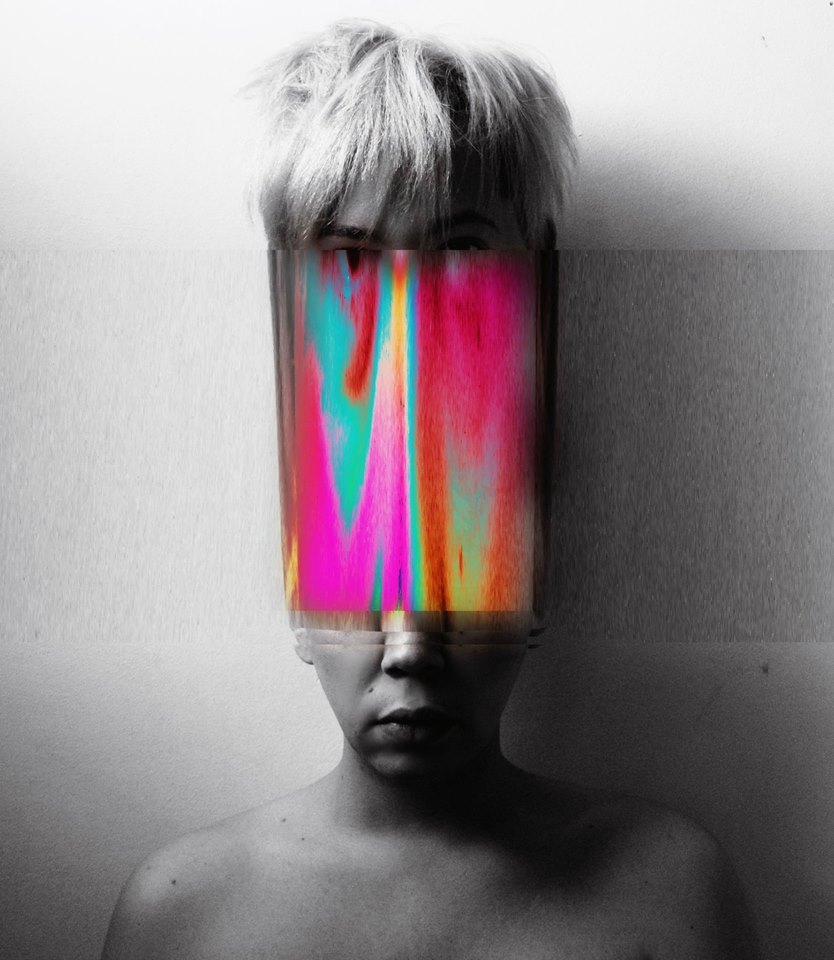




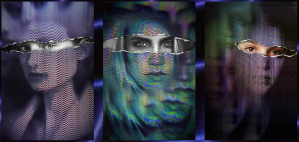
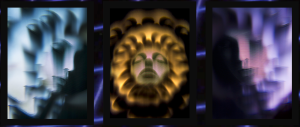
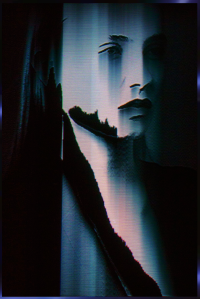
Leave a comment